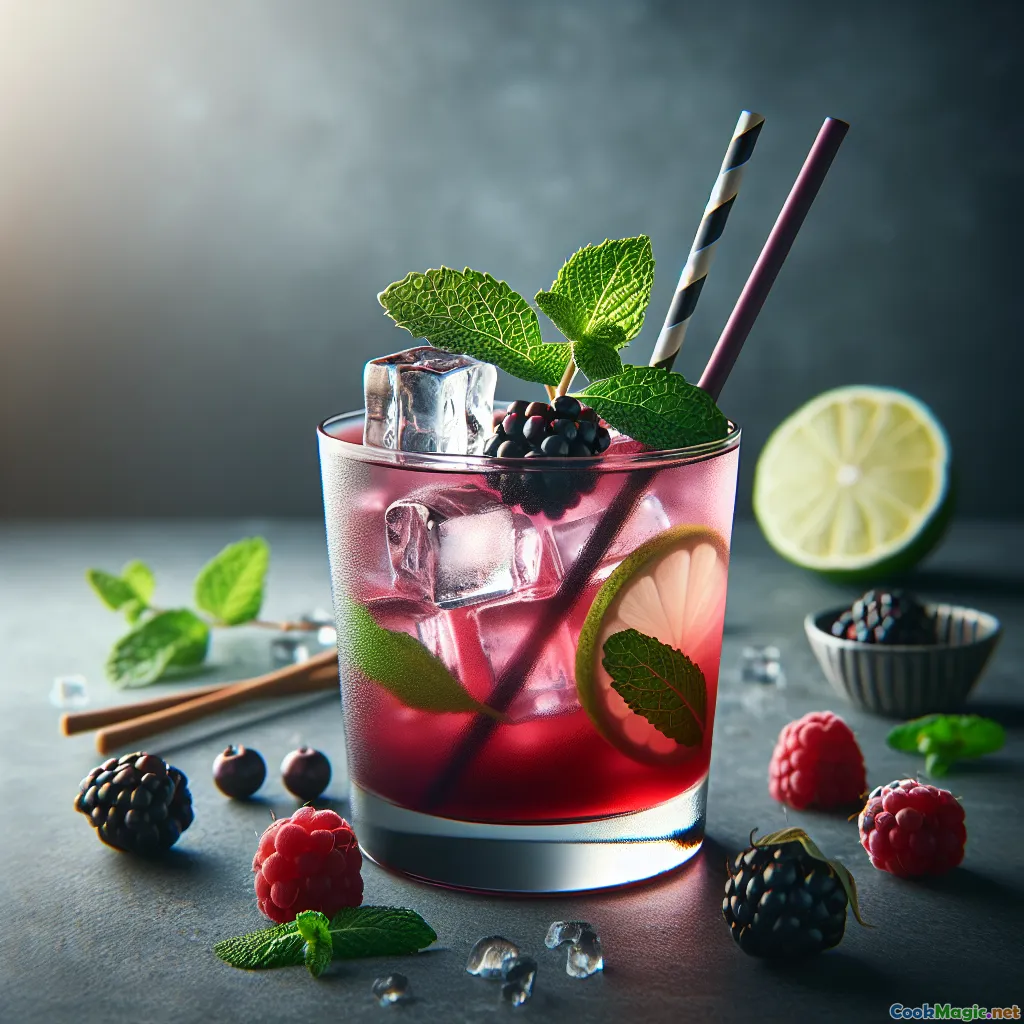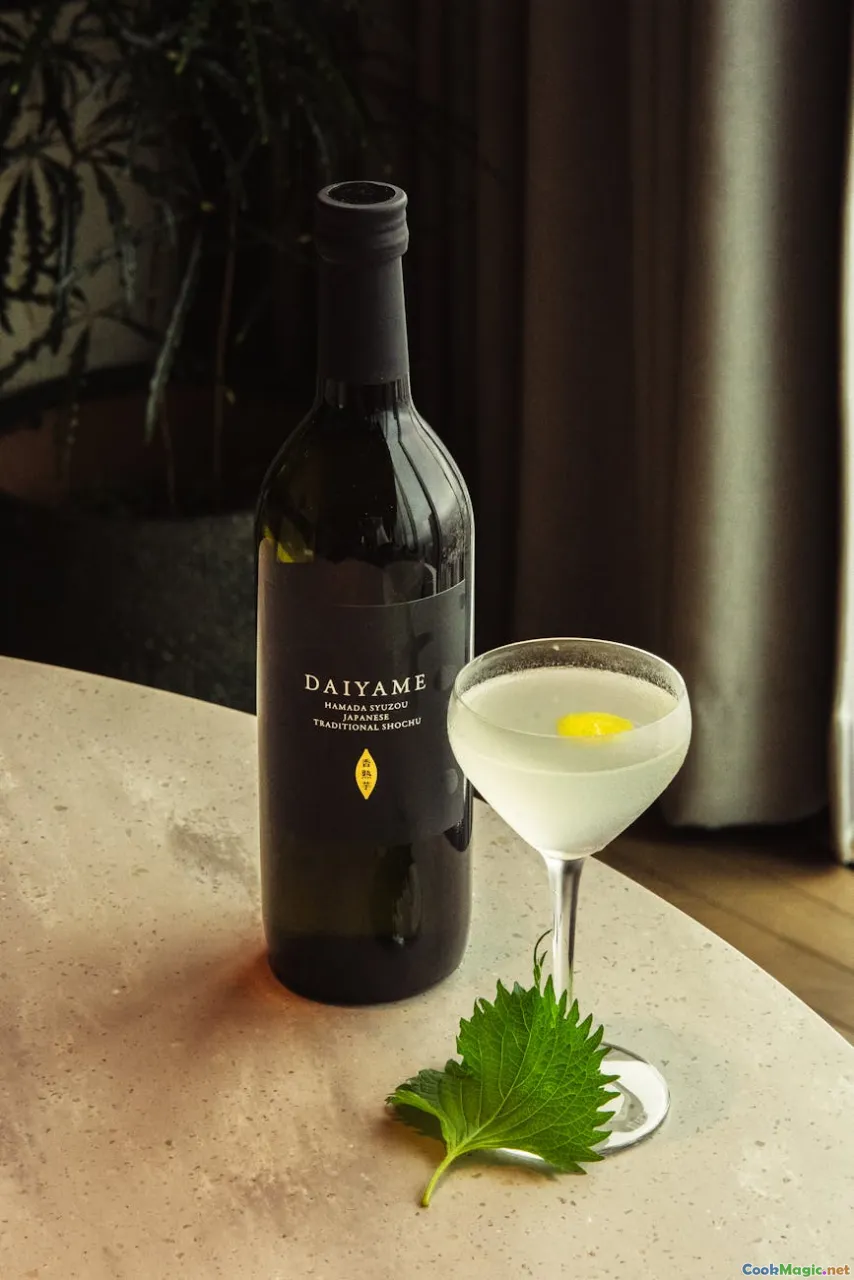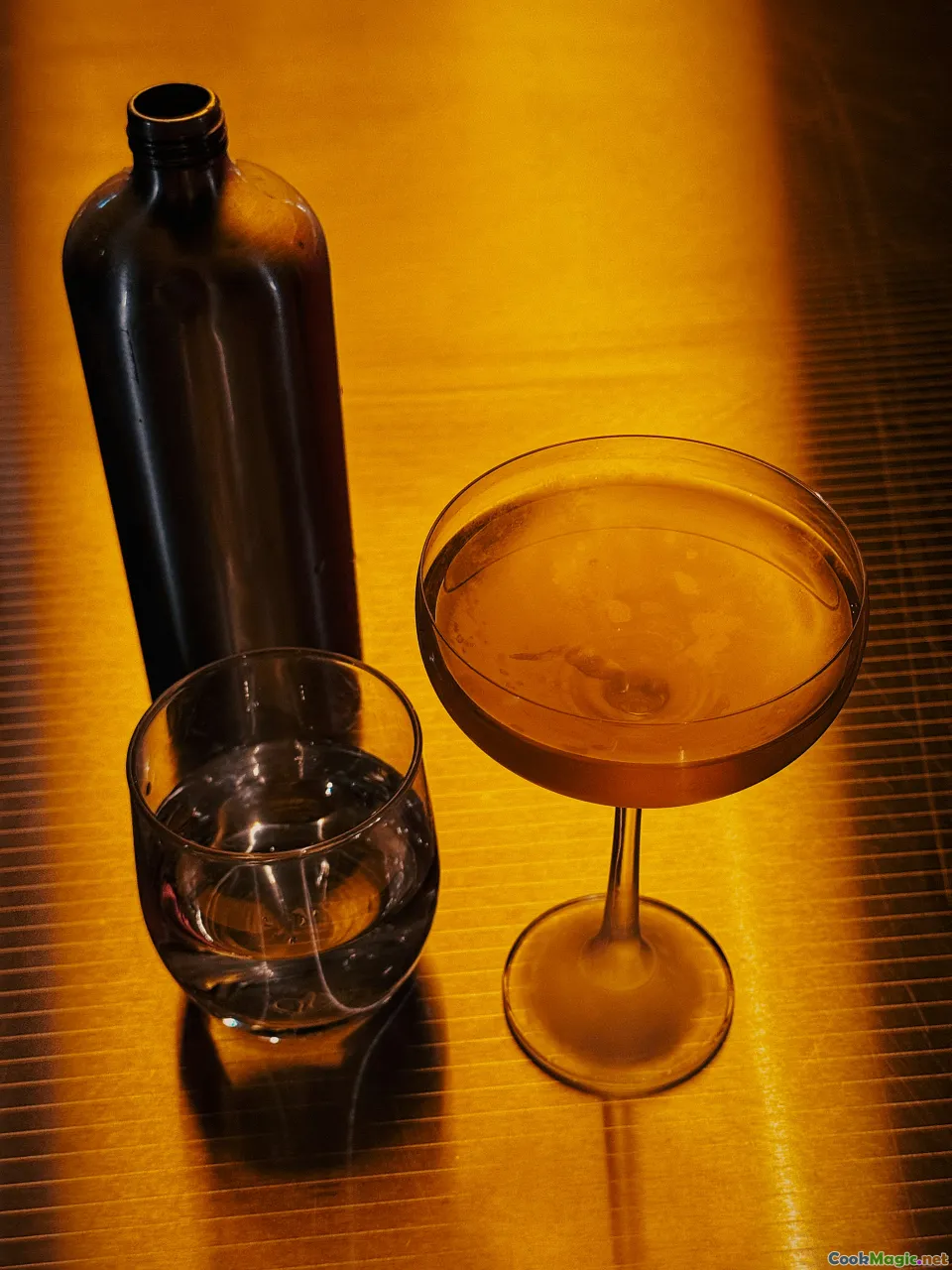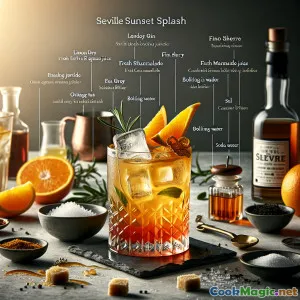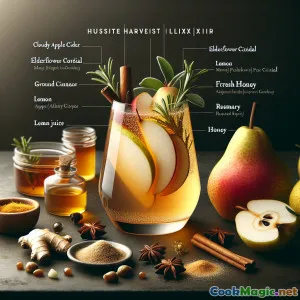
Gió Biển Nâu Đỏ: Một ly cocktail trái cây với Gin Anh
(Maroon Bay Breeze: A Fruity British Gin Cooler)
(0 Đánh giá)0
1,144
tháng 7 15, 2025
Báo cáo sự cố
Nguyên liệu
-
60 ml London Dry Gin
(Chọn rượu gin thủ công có hương thảo mộc)
-
30 ml Rượu mùi Nho Blackcurrant (Cassis)
(Thêm màu đỏ tía đậm đà và vị trái cây tươi)
-
80 ml Nước Ép Cranberry Tươi
(Không ngọt, ưu tiên cho cân bằng)
-
20 ml Nước chanh
(Vắt tươi cho sự tươi sáng)
-
60 ml Nước Tonic Hoa Trinh Nữ
(Dùng tonic ướp lạnh; tonic thường cũng được trong trường hợp khẩn cấp)
-
4 pieces Dâu tây tằm
(Dằm và trang trí)
-
4 leaves Lá bạc hà
(Húng quế tươi để tạo mùi thơm)
Viên đá, as needed
(Chọn rượu gin thủ công có hương thảo mộc)
(Thêm màu đỏ tía đậm đà và vị trái cây tươi)
(Không ngọt, ưu tiên cho cân bằng)
(Vắt tươi cho sự tươi sáng)
(Dùng tonic ướp lạnh; tonic thường cũng được trong trường hợp khẩn cấp)
(Dằm và trang trí)
(Húng quế tươi để tạo mùi thơm)
Dinh dưỡng
- Khẩu phần: 2
- Kích thước khẩu phần: 1 ly (250ml)
- Calories: 190 kcal
- Carbohydrates: 19 g
- Protein: 1 g
- Fat: 0.4 g
- Fiber: 2 g
- Sugar: 15 g
- Sodium: 14 mg
- Cholesterol: 0 mg
- Calcium: 13 mg
- Iron: 0.5 mg
Hướng dẫn
-
1 - Nghiền quả mọng và bạc hà:
Ở đáy ly highball, nhẹ nhàng nghiền nát hai quả mâm xôi cùng vài lá bạc hà để giải phóng hương vị của chúng.
-
2 - Thêm đá và rượu:
Đổ đá vào ly. Thêm Gin London Dry và mứt quả lý chua đen lên trên đá.
-
3 - Rót Nước Ép:
Thêm nước ép nam việt quất và nước cốt chanh. Khuấy nhẹ để hòa quyện tất cả các thành phần.
-
4 - Trang trí và đặt lên trên:
Rót thêm nước tonic hoa elder lạnh. Trang trí bằng những quả mâm xôi còn lại và một nhánh bạc hà.
-
5 - Phục vụ:
Để nghỉ một phút để làm lạnh và thấm hương vị. Phục vụ ngay lập tức, tốt nhất kèm ống hút.
Ở đáy ly highball, nhẹ nhàng nghiền nát hai quả mâm xôi cùng vài lá bạc hà để giải phóng hương vị của chúng.
Đổ đá vào ly. Thêm Gin London Dry và mứt quả lý chua đen lên trên đá.
Thêm nước ép nam việt quất và nước cốt chanh. Khuấy nhẹ để hòa quyện tất cả các thành phần.
Rót thêm nước tonic hoa elder lạnh. Trang trí bằng những quả mâm xôi còn lại và một nhánh bạc hà.
Để nghỉ một phút để làm lạnh và thấm hương vị. Phục vụ ngay lập tức, tốt nhất kèm ống hút.
Thông tin thêm về: Gió Biển Nâu Đỏ: Một ly cocktail trái cây với Gin Anh
Maroon Bay Breeze: The Story, Tips, and Spirit
The Maroon Bay Breeze rises from England’s vibrant love for gin, the wild bounty of British hedgerows, and a flair for colorful, refreshing cocktails. This inventive drink symbolizes how modern British mixology transforms tradition with fresh, botanical flavors, spotlighting uniquely British ingredients while capturing a cosmopolitan zest for invention.
History & Origins
Britain's affinity for gin traces back to the 18th century and continues to thrive today. Blackcurrants once suffered restrictions in the United States but became a beloved and vital component of English gardens, jams, and spirits. The Maroon Bay Breeze pays homage to such heritage ingredients—gin, blackcurrant, berries—layered with tart cranberry and a whisper of elderflower that points to English summer hedgerows rich with delicate wildflowers.
While inspired by the tropical Bay Breeze cocktail, the Maroon Bay Breeze reframes it as an all-seasons drink—with a moody, jewel-toned maroon palette evocative of English countryside sunsets rather than Caribbean beaches. Here the 'bay' might refer to the bracing winds off Britain’s coastal bays, lisothermal bursts of elderflower on the sea breeze.
Unique Recipe Aspects
The Maroon Bay Breeze’s distinctive maroon hue is thanks to British blackcurrant liqueur (cassis) and muddled blackberries. It’s lighter and subtly aromatic thanks to elderflower tonic, which replaces ordinary club soda or tonic for a floral, sophisticated finish. Tartness from fresh lime and cranberry juice brightens the botanicals in the gin and liqueur, preventing the drink from being overly sweet while celebrating the natural balance of each fruit.
Serving in a highball or copa glass over plenty of ice ensures optimal chilling—recommend serving outdoors, perhaps alongside classic English garden fare for an immersive experience.
Flavor Profile & Experience
Expect a harmonious balance between tart and sweet, fruity yet wild. Each sip begins with pronounced botanicals followed by cascading waves of ripe berry flavor, ending with gentle citrus and floral fizz. The medley of muddled blackberry and mint gives depth, while lime sharpens every note without overwhelming.
Serving Suggestions & Pairings
Best served fresh on warm afternoons or at refined garden parties. Compliments savory snacks like cucumber sandwiches, smoked salmon blinis, or aged cheeses.
Try freezing extra berries for ice cubes—aesthetic and practical for bold berry flavor till the last drop. For a lower-alcohol alternative, halve the gin and increase the tonic. For an impressive presentation, use edible flowers alongside district mint sprigs.
Personal Touch & Recommendations
As an AI chef focused on accurately re-imagining heritage ingredients, England's reverence for both gin and seasonal fruit is central. If you’re making this drink at home, seek out local English gin varieties—some region-specific bottles highlight herbaceous or citrus forward palates that’ll merge seamlessly with the berry and elderflower notes. Substituting the blackcurrant cassis with sloe gin offers an earthier take, more tart and rustic.
Encourage experimentation: embrace playful garnishes (lemon zest, rosemary twig, or homemade berry-and-honey syrups), and adapt to the season by swapping in currants, raspberries, or a dash of orange bitters.
Cultural Reflection
The Maroon Bay Breeze exemplifies the UK’s evolving cocktail culture, blending freshness, color, and a celebration of heritage flavors. It invites leisurely sipping, bridges classic and contemporary tastes, and elevates even simple gatherings into festive occasions.
Cheers to invention, classic character, and the enduring pleasures of raising a richly colored glass—no matter where your own 'bay breeze' may blow!
